County closes homeless camp in Kailua-Kona
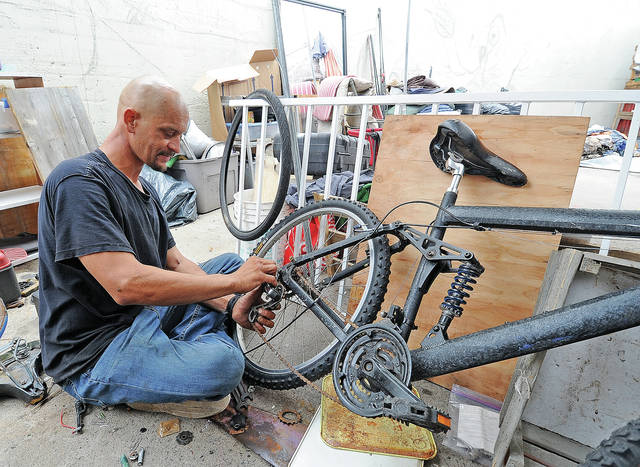
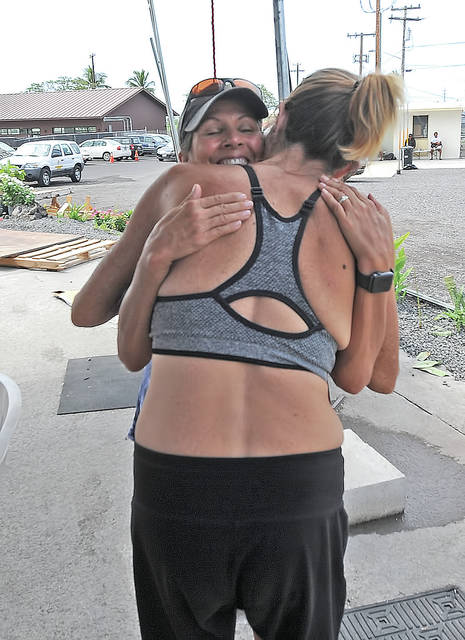
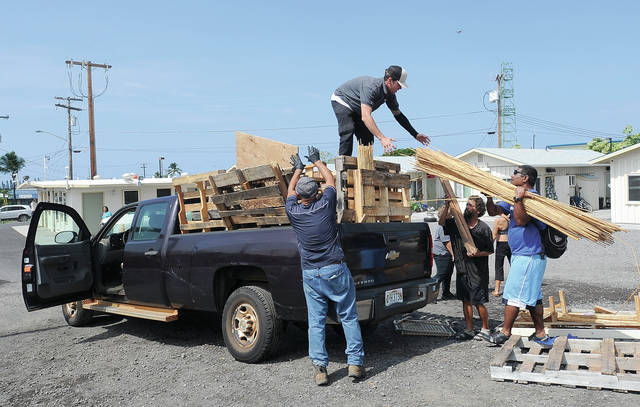
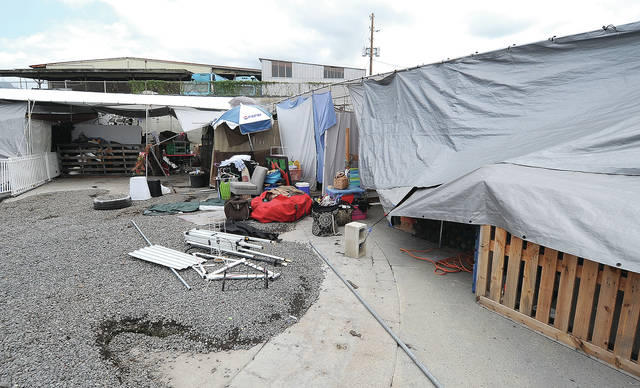
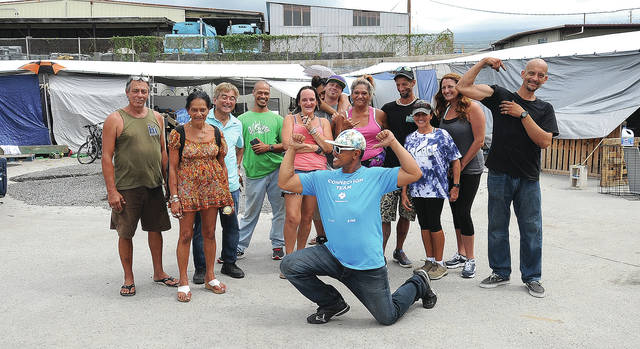
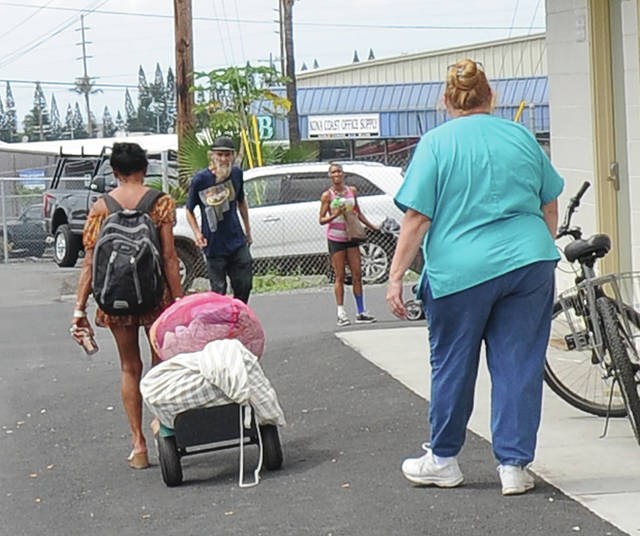
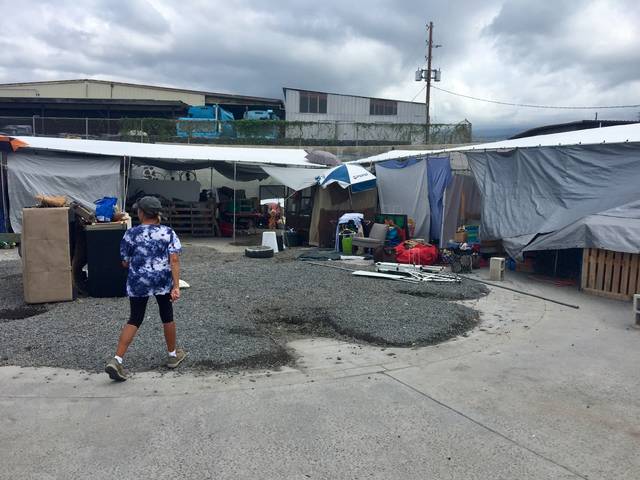
KAILUA-KONA — Hawaii County on Tuesday closed Camp Kikaha in the Old Kona Industrial Area, a temporary homeless encampment located adjacent to HOPE Services Hawaii, after operating the site for more than seven months.
KAILUA-KONA — Hawaii County on Tuesday closed Camp Kikaha in the Old Kona Industrial Area, a temporary homeless encampment located adjacent to HOPE Services Hawaii, after operating the site for more than seven months.
Lance Niimi, executive assistant to Mayor Harry Kim who specializes in managing Hawaii Island’s homeless problem, said the camp was never meant to be permanent.
The expiration of an emergency proclamation made by Kim in August prompted the camp’s closing. The proclamation had allowed the camp to operate outside of standard zoning, building and fire codes. Niimi said proclamations typically last two months, but the mayor has the leeway to extend them if he sees fit.
Linda Vandervoort, a volunteer who handled day-to-day management of Camp Kikaha essentially since its inception, said a lack of running water and fire hazards due to the canopies and pallets used to set up and separate individual living units factored heavily into the decision to shut the camp down.
“We’ve been saying for months that this camp, everything as it is, isn’t designed to be permanent, isn’t sustainable to be permanent, and we stretched it out as long as we could,” Vandervoort said. “It would take quite a bit of work to bring us up to code and make this as safe as it could be, and we were just not able to do that.”
She added the county’s shifting focus to more permanent solutions like Village 9 — a proposed, long-term housing site off Kealakehe Parkway — along with a sister site in Hilo and potentially Pahoa also played a role.
The state recently granted Hawaii County $184,000 for the development of a master plan and an environmental assessment (EA) at the Village 9 site after striking a deal with the county to transfer 15 acres of state land for use as a permanent homeless site. The community will have a chance to add input on the proposed project during the EA process.
The state retained the rest of the roughly 35-acre plot and plans to build affordable housing units there.
Niimi said the hope is to fund all the proposed permanent homeless sites via a combination of one-time CIP monies from the state this year and legislation currently moving this session that would create long-term programs like Ohana Zones to provide operational funding in perpetuity.
Such facilities are needed, as Hawaii County remains host to nearly 1,000 homeless individuals, according to the most recent Point-In-Time Count numbers from a survey conducted in January of 2017.
Niimi added the decision to shut down Camp Kikaha was ultimately his, with approval from Kim. Money, Niimi explained, was definitely a concern.
Overall cost for the camp was substantial in the early going until the county dispatched with security services that totaled $15,400 per month for the first three months of the camp’s existence.
The county then shifted gears to self-management. Costs after that dropped to $500 a month for portable toilets and smaller additional amounts for cleaning supplies and the like.
“The county has a very tight budget,” Niimi explained. “I proposed some other options to keep (the camp) open, we tried, but I think we made the right decision. We have to move on.”
All told, Camp Kikaha served 51 homeless individuals since the open-air, canopied structure was constructed in August following the eviction of dozens of homeless residing in Old Kona Airport Park just down the road.
Vandervoort said as of Tuesday, 17 individuals had been placed in emergency housing with HOPE Services Hawaii, five of which went in Monday night. Two have graduated to permanent housing. Three residents had rejoined family members in stable living situations, and six homeless individuals found jobs. Vandervoort said employment numbers are fluid and may soon be higher.
There were some rocky points in the camp’s history. Three residents were arrested, two were evicted for using drugs on the premises and four were unable to assimilate into a living situation that required the development of communication skills and strategies to deal with conflict resolution among some who suffered from mental and/or behavioral health issues.
Another seven were asked to depart due to behavioral issues, while five left for reasons of their own. One homeless person from the camp found their way into a residential treatment program.
Shanon Pua, 42, a Big Island native who has lived on the streets for the last decade, resided at Camp Kikaha since its inception. On Monday night, he moved into emergency housing across the lot, but attended the camp cleanup Tuesday morning with members of the county Department of Parks and Recreation and other volunteers.
Pua, who is currently exploring multiple job opportunities, struggled to find the words to describe what the camp meant for him but noted it provided him with structure and a sense of home — the first he’d felt in a long while.
“The possibilities are endless,” he said. “(Camp Kikaha) was more than good. It was way more than good.”
County Managing Director Wil Okabe said in a press release Tuesday afternoon that the county had found alternate housing for every resident of Camp Kikaha but that some residents had refused to be relocated.
“We want to encourage these folks to accept what we’re offering in terms of accommodation,” he said.
Vandervoort said Tuesday morning that nine homeless individuals remained without a solution. Niimi confirmed that some of those nine had refused emergency housing options but that others are still considering the possibility. If they choose to accept that option, they would be put on a waiting list as the emergency shelter currently has no vacancies.
“Everybody wanted to stay (at the camp),” Vandervoort explained. “Especially for some of the women when you don’t have a safe place to stay out there and all of the sudden you have a safe place, it’s hard to give that up to unsurety.”
The county press release indicated the state has promised $25,000 for code-compliant tents or igloos that are fire-resistant. Niimi said those were originally intended for Camp Kikaha. If the county does receive the money for their purchase, discussions will be held as to where the structures might be installed.
Wherever the county can find a place for them would prove valuable, as exemplified by what Camp Kikaha accomplished. Vandervoort said benefits ranged from medical and social services outreach to skill building for transition back into mainstream society.
“First and foremost it gave unsheltered people a place to sleep where they could legally be,” Vandervoort said.



Like Reagan said, “Government is the problem!”
“Camp Kikaha resident Amane repairs his bike . . . ”
I don’t mean to single anyone out, but given this gentleman appears to be healthy enough to ride a bike, why isn’t he working to support himself? If you ride a bike, you can walk along side a truck and glue reflectors down on the highway, as I saw a crew doing yesterday, or rake leaves, or help clean the shoreline down in Kau, or any number of things that don’t require a PhD or even a decent criminal record. But he’s “homeless”. I’d like to know why.
Still cannot rent a room
Hawaii County should buy them an air ticket and send them all to Seattle. In Seattle the homeless get free tents, I Phones and wireless internet. Oh, and medical services are available too. get the word out to the homeless there that Seattle is the place to be.
The Mayor declared an emergency proclamation to set that camp up and to sidestep any building codes or fire codes. Now he’s shutting it down because of a tight budget and it would cost money to bring it up to code. What did he think would happen and how will he sustain a larger camp or camps? Not to worry, now he has an assistant that “Specializes” in homeless management. Just two months ago Niimi was figuring it out even sleeping with them, but now he’s a specialist in Homeless Management. Sounds like a great BS title to get a raise or a huge 89 day contract.
Since when is being put on a waiting list a solution, I would classify that as a solution waiting to happen.
OK. So they clear the camp and there are 9 people who have not found shelter out of 51 residents. Now, they want to spend upward of a $2 million (1st year cost, assuming no cost overruns) to make places for 50 residents in a lava field across from the harbor. I’m not a math wiz, but this seems to show that the government, by creating capacity, will fill it. Build it and they will come. The experience with this camp shows that with some planning and a small amount of taxpayer resources, they can take care of over 80% of the homeless and keep them not depended on the government/tax payers.